News
Pulling back from the precipice: A Pathfinder perspective

The way out of Sri Lanka’s most challenging external financing crisis is to negotiate an arrangement with the IMF and agree on a preemptive debt restructuring, Pathfinder Foundation has said in a media statement.
An IMF programme could include strengthening the government’s revenue base (widening the tax base and improving tax administration); improving the primary balance in the budget (revenue – (expenditure-interest payments)); proactive, data-driven and non-interventionist monetary policy; a flexible and realistic exchange rate policy to assist in building up external reserves; commercialisation of SOE operations, including full cost-recovery in the pricing of electricity and fuel, restructuring of the CEB and the CPC, the implementation of the Statements of Intent and addressing the losses being incurred by SriLankan Airlines, the Foundation said.
Pathfinder Foundation said that the Gross Official Reserves have declined to USD 1.6 bn as at end-November. Repayments over the subsequent 12 months amount to about USD 7 billion.
“The authorities have responded with import and capital controls as well as a fixed exchange rate based on moral suasion by the CBSL and rationing of foreign exchange by the commercial banks. This has resulted in a scarring of the economy which will inevitably have an adverse impact on growth, employment and incomes. Inflation is rising and is on the verge of reaching double digits and shortages constantly emerge of essential goods and services,” the Foundation said.
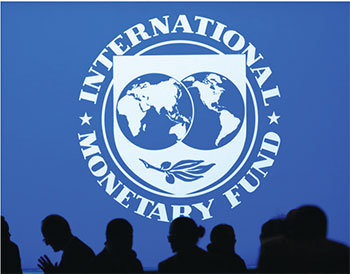 The Pathfinder statement in full: “The Road Map, presented by the CBSL, identified a number of potential sources of debt- and non-debt-creating inflows to fill the external financing gap. The securitisation of remittance flows has been added to the menu of options recently. However, to date there has been an alarming depletion of external reserves and an inexorable increase in the external financing gap.
The Pathfinder statement in full: “The Road Map, presented by the CBSL, identified a number of potential sources of debt- and non-debt-creating inflows to fill the external financing gap. The securitisation of remittance flows has been added to the menu of options recently. However, to date there has been an alarming depletion of external reserves and an inexorable increase in the external financing gap.
“If the authorities have clear visibility of sufficient inflows to arrest the steady deterioration in the country’s external position, one can be hopeful of a turnaround to avoid the possibility of a debt default which would greatly amplify problems, such as rising inflation; pressure on exchange and interest rates; losses in the real value of incomes; decline in business confidence; and disruption to the supplies of basic goods and services. If the anticipated inflows are not forthcoming in sufficient quantities to fill the external financing gap, there will be no option but to turn to the IMF to avoid further scarring of the economy and creating greater shortages of essential goods and services.
“It is extremely unlikely that it would be possible to obtain IMF assistance without a debt rescheduling as the Fund does not support countries where the debt is considered unsustainable. Equally, it is not practical to reach agreement on debt restructuring without an IMF programme. So, the twin pillars of the way forward would need to be negotiating an arrangement with the IMF and agreement on a preemptive debt restructuring.
“Attempting to undertake stabilisation of the economy without the cushion of financing that can be mobilised through an IMF programme would be like performing on the high-trapeze without a safety-net. There needs to be a less painful blend of adjustment and financing. However, it must be highlighted that pain cannot be avoided. An IMF programme would impose significant burdens on the people. The main thrust of this article is that this pain would be less than the severe dislocation that is already being caused by squeezing the economy to make up for the dollar illiquidity. The conditionality attached to IMF programmes are intended to stabilise the economy (contain inflation and balance of payment pressure) and improve its creditworthiness.
“An IMF programme could include, inter alia, the following: strengthening the government’s revenue base (widening the tax base and improving tax administration); improving the primary balance in the budget (revenue – (expenditure-interest payments)); proactive, data-driven and non-interventionist monetary policy; a flexible and realistic exchange rate policy to assist in building up external reserves; commercialisation of SOE operations, including full cost-recovery in the pricing of electricity and fuel, restructuring of CEB and CPC, the implementation of the Statements of Intent and addressing the losses being incurred by SriLankan Airlines.
“An IMF Extended Fund Facility can provide balance of payment financing of up to USD 1 bn per year for three years. The amount made available would be calibrated according to the strength of the reforms undertaken. An IMF programme would also unlock direct budgetary support from the World Bank, Asian Development Bank and possibly a few bilateral donors (over and above their usual project loans). Both balance of payments and budgetary support are most urgently required for the twin deficit Sri Lankan economy. Based on indications in 2020, up to USD 2 bn in all can be mobilised through these sources, depending on the strength of the reforms undertaken. Engagement with the IMF will also transmit positive signals to both investors and creditors, both at home and abroad. It can also pave the way for an eventual upgrading of the sovereign rating, which would improve the prospect of attracting foreign investment and credits.
“The second pillar, preemptive restructuring, must also be pursued concurrently with negotiations with the IMF. Not only can this facilitate the obtaining of a Fund programme but it can also create some leeway to stabilise the economy and place it on a path of sustained growth. Debt restructuring can be achieved through: extending maturities; modifying coupon (interest) rates; and hair-cuts on the principal (write-downs). One or more of these modalities can be used to reach an agreement with creditors that places Sri Lanka’s debt servicing on a sustainable path. Ideally, about a 3-year window should be created where debt servicing is suspended. This can release a very substantial amount of scarce foreign exchange to finance imports. The impact on growth, employment and incomes would be materially positive. In considering debt restructuring, it is important to realise that the most significant usual downside is a loss of access to international capital markets. In Sri Lanka’s case, this has already happened with the downgrading of the sovereign rating. So, the most important disadvantage is no longer a factor. Another concern relates to the impact on domestic holders of USD denominated sovereign debt, mainly banks. A mitigating factor is that a significant share of these holdings have been bought at a discount from the secondary markets. In other countries, Central Banks have exercised regulatory forbearance to assist financial institutions which have required such support to repair their balance sheets.
“It must, however, be recognised that it could take 4-6 months to negotiate an IMF programme and a preemptive debt restructuring agreement. The present trends in external reserves on the one hand and net drains on foreign currency on the other indicate that bridging finance is required to meet obligations over the next 6 months to avoid a debt default. The package of assistance offered by India is an encouraging start and needs to be finalised as soon as possible. It has to be supplemented by financing from other friendly countries, like Japan. There is scope for India and Japan to work together to support Sri Lanka at this critical juncture. Their willingness to step forward is likely to be greater, if it is known that Sri Lanka has taken a decision to approach the IMF. While our development partners will be wary of having to make an open-ended commitment, they are likely to find bridging finance more palatable.
Time has almost run out. Urgent, focused and pragmatic attention to these pressing issues is of paramount importance. An IMF programme can be at the heart of a medium-term strategy to overcome the current challenges and give Sri Lankans greater hope about the future prospects of the economy.”
Latest News
70,297 persons still in safety centers

The Situation Report issued by the Disaster Management Center at 06:00AM on 16th December 2025 shows that 70,297 persons belonging to 22,338 house holds are still being housed at 731 safety centers established by the government.
The number of deaths due to the recent disastrous weather stands at 643 while 183 persons are missing.

News
MEPA to crack down on marine polluters

… Warns would-be polluters of criminal prosecution, hefty fines and even blacklisting
The Marine Environment Protection Authority (MEPA) has warned that ship owners, operators and local entities responsible for marine pollution will face criminal prosecution, heavy financial penalties and possible blacklisting, MEPA Chairman Samantha Gunasekera said yesterday.
Gunasekera told The Island that Sri Lanka would no longer tolerate negligence and regulatory breaches that threaten the country’s marine ecosystems, coastal livelihoods and national economy.
“Any party that pollutes our seas—whether foreign vessels or local operators—should be prepared to face the full force of the law,” Gunasekera said. “There will be no room for excuses, delays or backdoor negotiations when marine pollution is involved.”
He said MEPA has intensified surveillance of major shipping routes, ports and environmentally sensitive zones amid rising maritime traffic through Sri Lankan waters, which remain among the busiest in the Indian Ocean.
by Ifham Nizam
News
SC delegation, headed by CJ Surasena, observes Indian Supreme Court in action
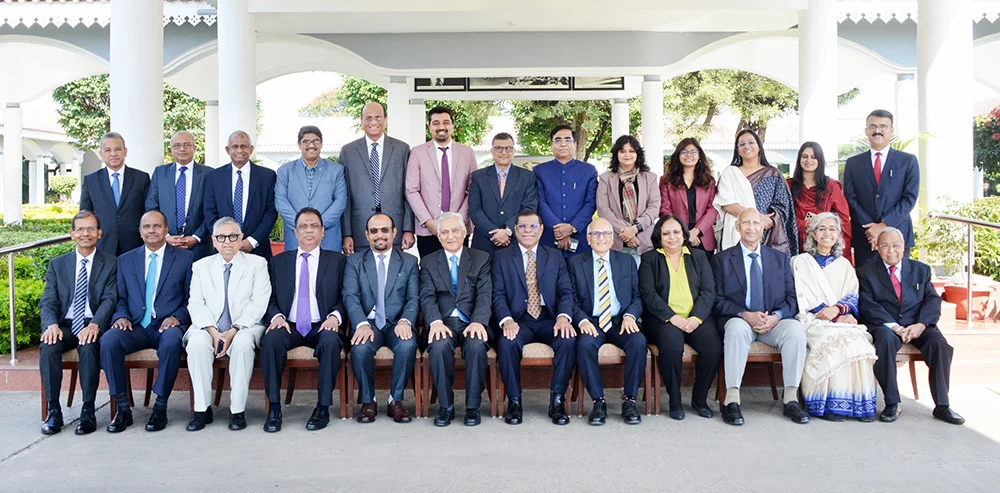
A 10-member delegation from Sri Lanka’s Supreme Court, headed by Chief Justice P. Padman Surasena, departed to New Delhi on the 11th of December, 2025, for an official visit to the Supreme Court of India as part of the ongoing official visit by the delegation to India.
The group was accorded a ceremonial welcome in the Court’s main hall, led by the Chief Justice of India (CJI) Surya Kant. CJI Kant told the assembled Judges that “the Indian judiciary was honoured to host” their Sri Lankan counterparts, expressing hope that the visit would be “meaningful and very constructive” and underscoring the “close emotional bonds” between the two countries.
The focal point of the programme was a special sitting of the Supreme Court. Chief Justice Surasena joined CJI Kant and Justice Joymalya Bagchi on the bench, presiding over the Court as a guest Justice. He was accompanied by nine other Supreme Court justices from Sri Lanka, who took seats in the well of CJI Kant’s courtroom to observe the day’s proceedings.
Supreme Court Bar Association President Vikas Singh formally greeted the delegation and praised Justice Surasena’s reformist efforts. Singh recalled the Sri Lankan Chief Justice’s own maxim, “If you want something you have never had, then you have got to do something you have never done”, highlighting the bold changes Surasena had introduced to modernise Sri Lanka’s Court system. Singh noted that these initiatives, particularly court digitization, were aimed at eradicating “the persisting problems of law delays” and streamlining case backlogs.
The Sri Lankan Judges spent the morning observing live Supreme Court proceedings in CJI Kant’s courtroom. This first-hand exposure to Indian court operations formed a key part of the programme’s judicial engagement. During the hour-long session, the visiting justices witnessed a range of cases on the Supreme Court’s roster, with Justice Surasena and the delegation following arguments from the front. The experience was designed to be immersive and following the hearing the Sri Lankan Judges were briefed on India’s own initiatives towards a digitalised court system, e-filing and case management systems.
The official programme then shifted to capacity-building and information exchange. In the early afternoon, Indian Supreme Court officials gave the Sri Lankan delegation detailed briefings on India’s technological initiatives. Court registrars demonstrated the e-filing system and other e-initiatives implemented by the Supreme Court of India. Additional presentations outlined the Court’s new case management systems and administrative reforms. These sessions highlighted how digital tools and better case-listing procedures have been used in India to increase efficiency. The Sri Lankan judges asked questions about India’s experience with electronic court records and the integration of technology in daily judicial work, reflecting their own interest in similar reforms back home.
The visit underscored the growing collaboration between the Indian and Sri Lankan judiciaries. Throughout the proceedings, both sides emphasised their shared legal traditions and mutual respect. As Chief Justice Surasena noted during the sitting, India is Sri Lanka’s “closest neighbour,” and historic links, even dating back to ancient epics, form the backdrop for today’s judicial dialogue. CJI Kant remarked that having the chief justices of two vibrant democracies together on the bench was a “significant moment” for the rule of law.
The Sri Lankan delegation continued its programme in Delhi on 12 December with a visit to the Delhi High Court and its International Arbitration and Mediation Centres. The exchange visit is expected to deepen judicial cooperation and provide practical insights for both courts. Officials on both sides say the engagement aimed at sharing best practices in court administration, reinforce legal ties and support ongoing reforms aimed at reducing case backlogs and delays.
-

 Features7 days ago
Features7 days agoFinally, Mahinda Yapa sets the record straight
-

 Features7 days ago
Features7 days agoHandunnetti and Colonial Shackles of English in Sri Lanka
-

 Business5 days ago
Business5 days agoCabinet approves establishment of two 50 MW wind power stations in Mullikulum, Mannar region
-
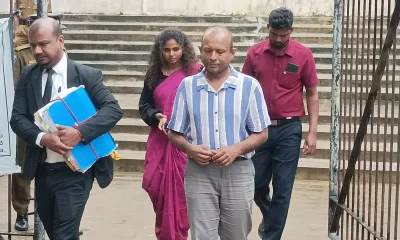
 News6 days ago
News6 days agoGota ordered to give court evidence of life threats
-

 Features6 days ago
Features6 days agoCliff and Hank recreate golden era of ‘The Young Ones’
-
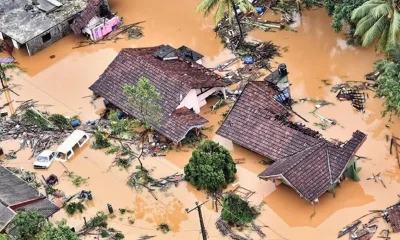
 Features6 days ago
Features6 days agoSri Lanka and Global Climate Emergency: Lessons of Cyclone Ditwah
-
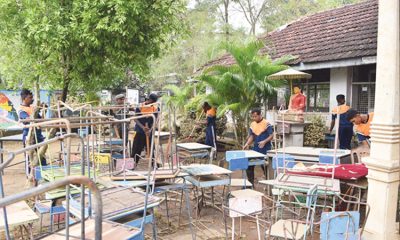
 Opinion7 days ago
Opinion7 days agoA national post-cyclone reflection period?
-

 Latest News6 days ago
Latest News6 days agoSri Lanka squad named for ACC Men’s U19 Asia Cup













